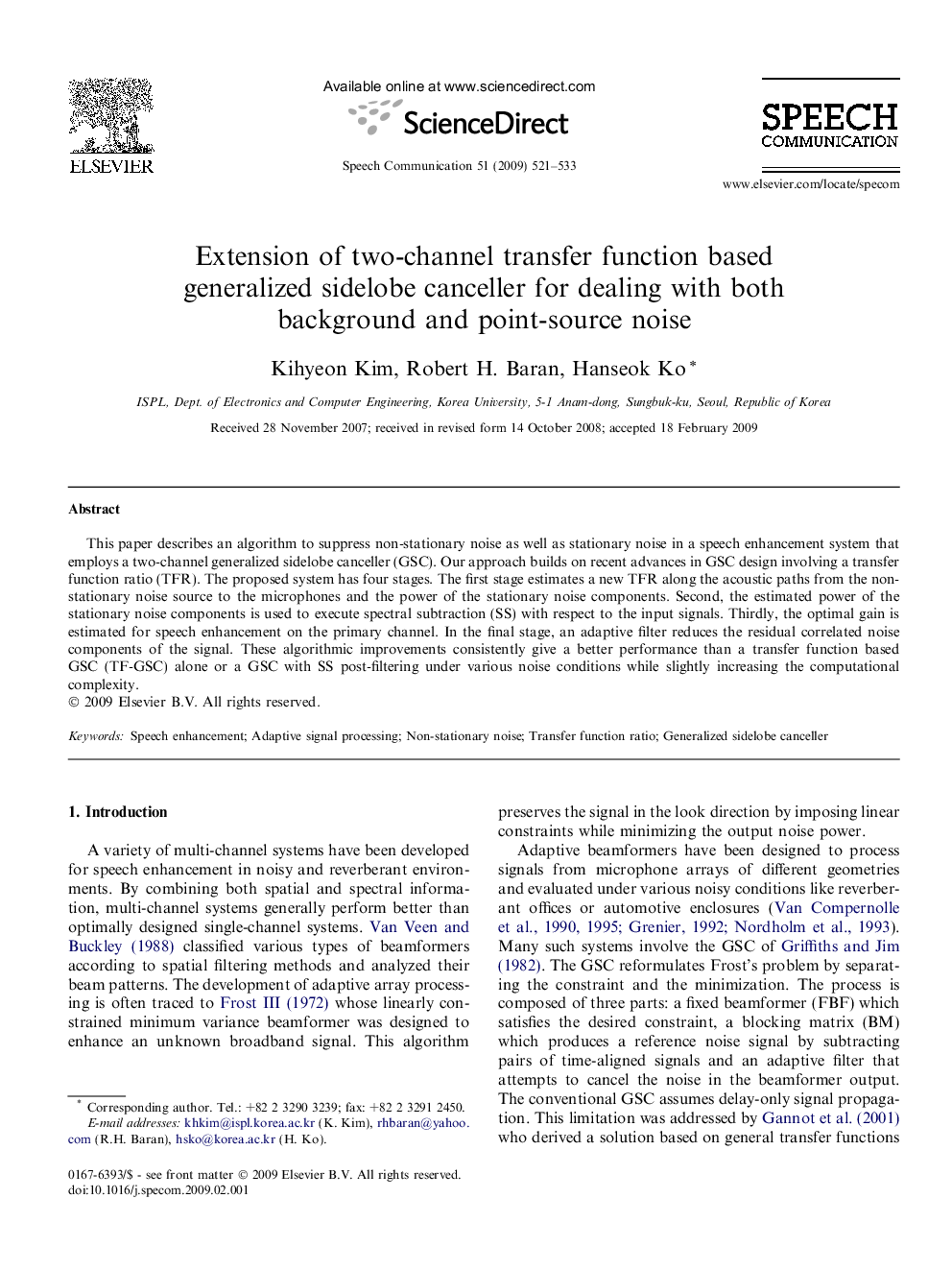| Article ID | Journal | Published Year | Pages | File Type |
|---|---|---|---|---|
| 565994 | Speech Communication | 2009 | 13 Pages |
This paper describes an algorithm to suppress non-stationary noise as well as stationary noise in a speech enhancement system that employs a two-channel generalized sidelobe canceller (GSC). Our approach builds on recent advances in GSC design involving a transfer function ratio (TFR). The proposed system has four stages. The first stage estimates a new TFR along the acoustic paths from the non-stationary noise source to the microphones and the power of the stationary noise components. Second, the estimated power of the stationary noise components is used to execute spectral subtraction (SS) with respect to the input signals. Thirdly, the optimal gain is estimated for speech enhancement on the primary channel. In the final stage, an adaptive filter reduces the residual correlated noise components of the signal. These algorithmic improvements consistently give a better performance than a transfer function based GSC (TF-GSC) alone or a GSC with SS post-filtering under various noise conditions while slightly increasing the computational complexity.
